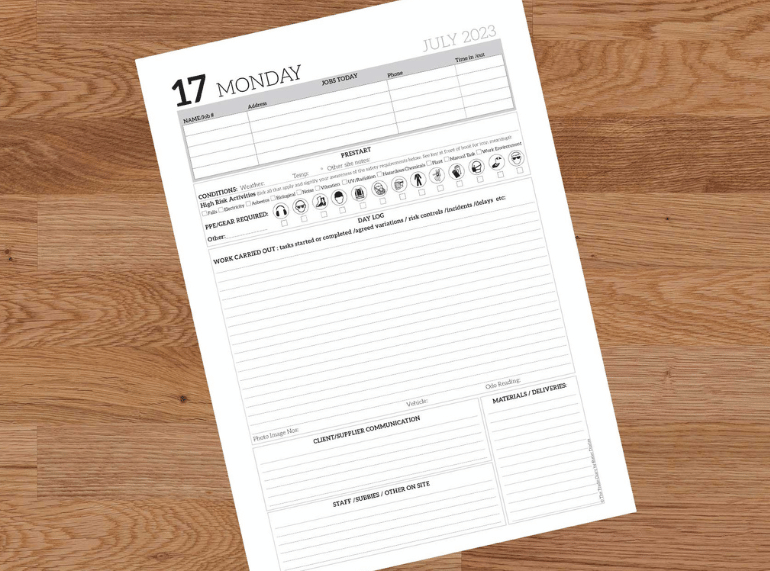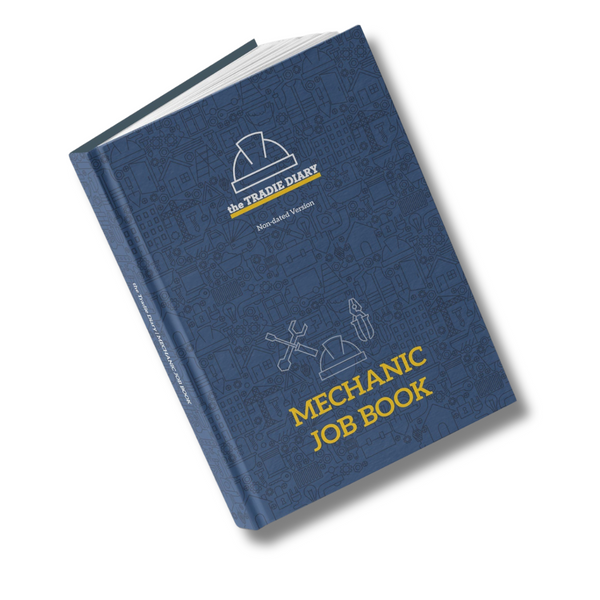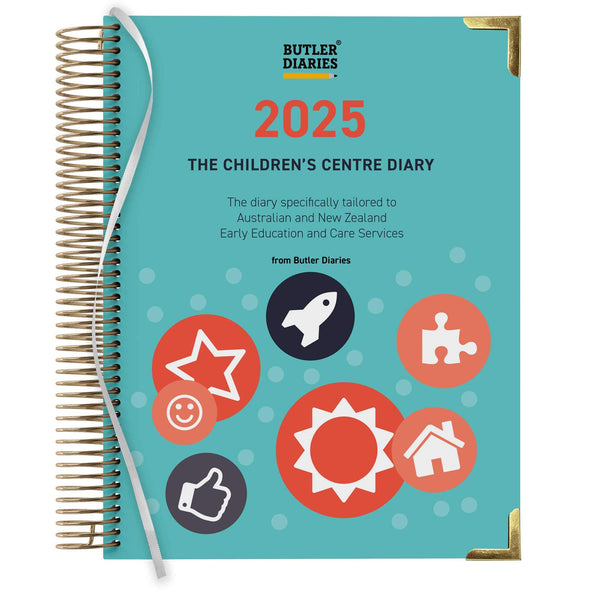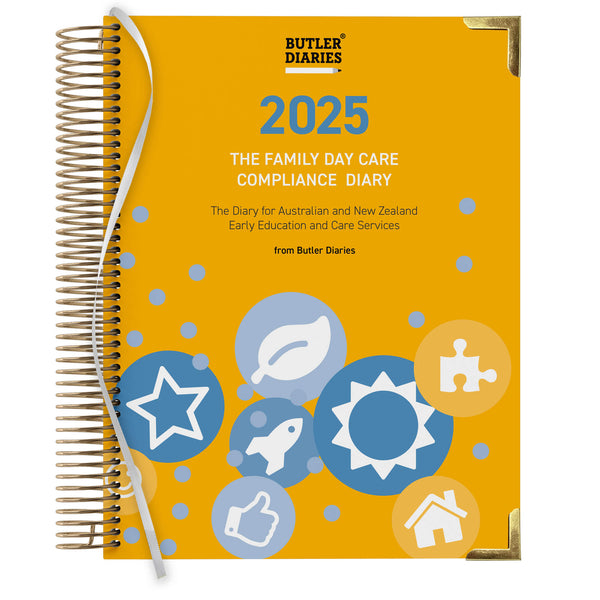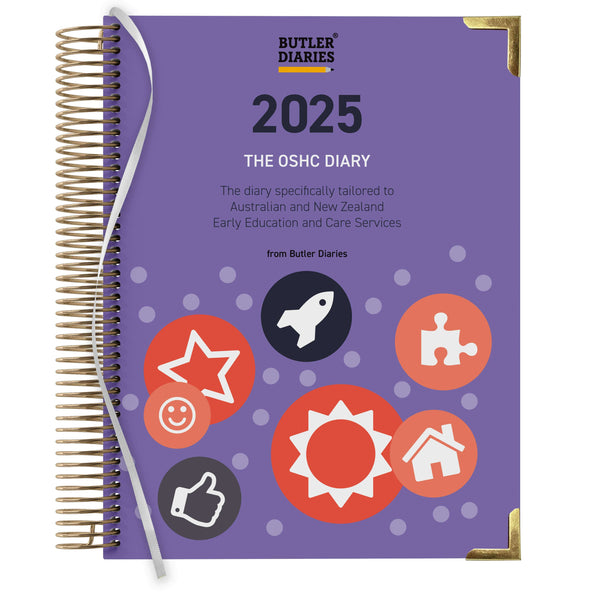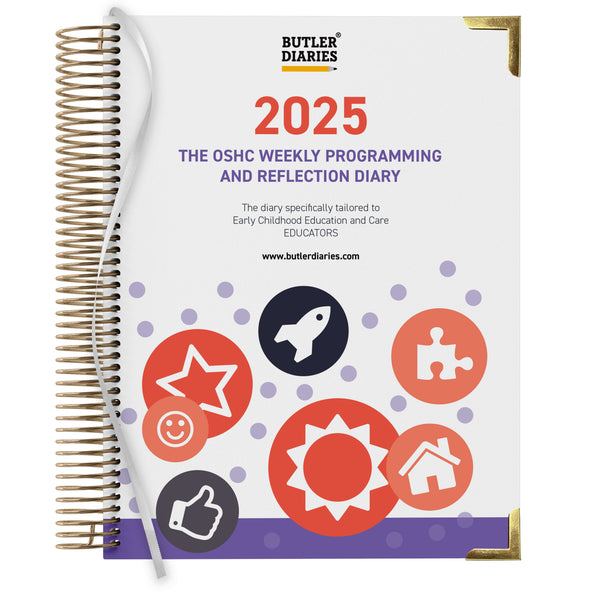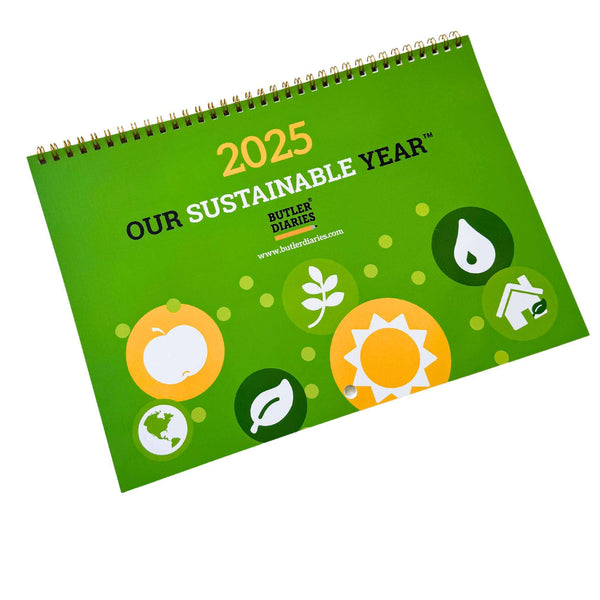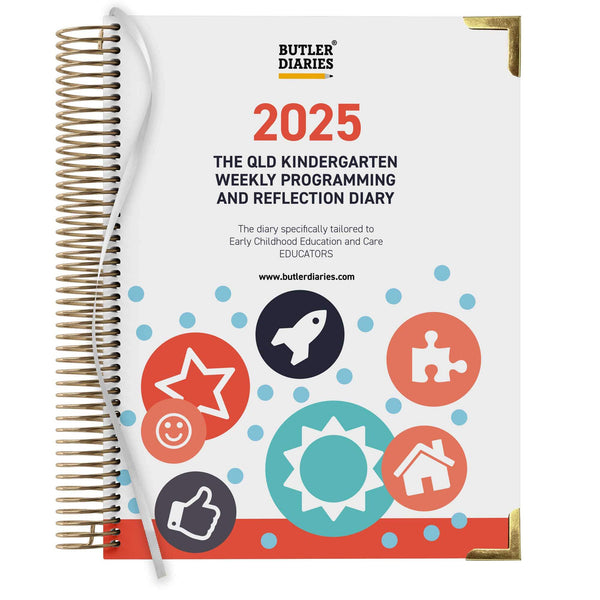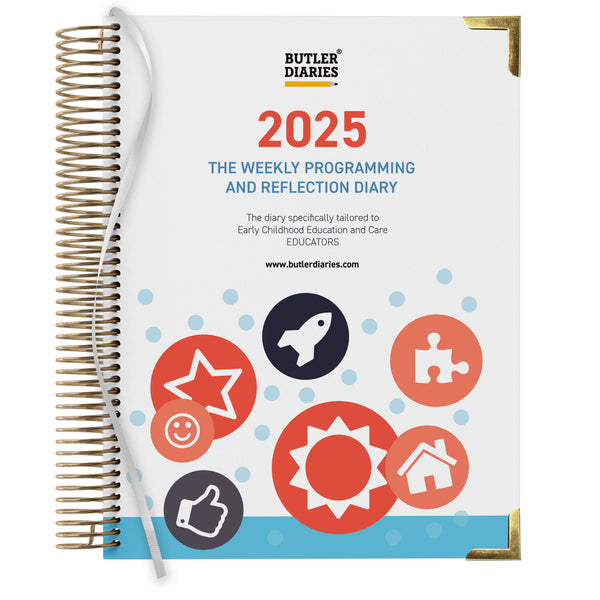As a tradie, staying organised is crucial for effectively managing your projects, communicating with clients and suppliers, and ensuring smooth operations on site. One invaluable tool in your arsenal is The Tradie Diary, a comprehensive record of your daily tasks, job details, and important communications. The Tradie Diary covers the following important records:
- Jobs Today,
- Prestart,
- Day Log,
- Photo Log,
- Odo Reading,
- Client/Supplier Communication,
- Materials/Deliveries,
- Staff/Subbies/Other On-Site, and
- Planning
In this blog post, we will provide you with essential tips for making the most of your Tradie Diary, covering everything from job management to client communication and more. Let's dive in!
Jobs Today: Start Your Day on the Right Foot
The "Jobs Today" section of your Tradie Diary is where you record all the projects you're scheduled to work on. Start your day by reviewing this list and prioritising tasks based on deadlines and requirements. By having a clear overview of your schedule, you'll be better equipped to manage your time efficiently and ensure that each job receives the attention it deserves.
Here are some tips to help you effectively utilise this section:
- Prioritise and Plan: Take a few minutes each morning to review your list of jobs for the day. Assess the urgency, complexity, and deadlines associated with each task. Prioritise them accordingly, placing the most critical or time-sensitive jobs at the top of the list. By having a clear understanding of your priorities, you can allocate your time and resources efficiently.
- Time Management: Keep track of the time spent on every job with the Time in/out column. This provides valuable information that can help you with invoicing each job. It will also provide valuable information on whether your quotes and job schedule include realistic labour estimates and time for completion. Over time, your scheduling and quoting will become more accurate and ensure you have more profit in your pocket.
- Time Management: Assign estimated time frames for each job based on its complexity and scope. This helps you gauge whether you have enough time to complete all the tasks within the day or if adjustments need to be made. Be realistic about time allocations, considering factors such as travel time between job sites, breaks, and unexpected delays that may arise.
- Communicate with Clients: Review any specific instructions or client requirements related to the jobs scheduled for the day. If there are any uncertainties or clarifications needed, reach out to the clients beforehand to ensure everyone is on the same page. Note this information in your Tradie Diary under Client Communication. Effective communication with clients helps minimise misunderstandings, increases customer satisfaction, and streamlines the workflow.
- Gather Materials and Equipment: Before heading out to the job sites, cross-reference the required materials and equipment for each task. Use your Tradie Diary to note down the necessary supplies and check if they are available. This allows you to gather everything you need in advance, reducing the chances of delays or interruptions during the workday.
- Delegate and Collaborate: If you're working with a team, make sure to clearly communicate the responsibilities and tasks associated with each job. Update your Tradie Diary with the relevant information, including the names of team members assigned to specific tasks. This promotes collaboration, accountability, and efficient utilisation of resources.
- Flexibility and Adaptability: While planning your jobs for the day, keep in mind that unexpected events or emergencies can occur. Leave some buffer time in your schedule to accommodate unforeseen circumstances. This flexibility ensures that you can handle emergencies or urgent client requests without major disruptions to the overall workflow.
- Update Job Status: As you complete each job, mark it as "done" or "completed" in your tradie diary. This allows you to visually track your progress and provides a sense of accomplishment. Additionally, noting the completion time for each task helps you evaluate your productivity and make improvements if necessary.
By effectively utilising the "Jobs Today" section of your Tradie Diary, you can start your workday with clarity, focus, and a well-organised plan. This sets the stage for increased productivity, improved time management, and enhanced client satisfaction. Remember, a well-prepared tradie is a successful tradie!
Prestart Checklist: Keeping Tradies and Businesses Safe
A prestart checklist is a valuable tool to ensure your team understands how to identify high-risk activities, respond to hazards, and use the appropriate PPE. Tradies make up 60% of all serious injury claims in Australia. Both the employer and employee are responsible for safety, negligence from either party can see them held accountable. Daily Prestarts are an essential part of ensuring everyone is accountable for their safety.
Our Tradie Diary Prestart keeps a record of all the key components of a safe working environment:
- Weather Conditions: Recording the day’s weather conditions can help you identify the appropriate PPE for the day and keep an evidence record of the responses you took to ensure appropriate clothing in different weather conditions. Tick the appropriate PPE or add a note in ‘Other Site Notes.’
- High Risk Activities: This involves conducting a thorough assessment of the work area to identify potential hazards. This includes inspecting for slip, trip, and fall hazards, electrical hazards, confined spaces, chemical exposures, and any other site-specific risks. Encourage workers to report any hazards they encounter and promptly address them before commencing work. Hazards that have been identified can be checked in your Prestart.
- Personal Protective Equipment (PPE): The Conditions and High Risk Activities will identify what PPE is required and you can use the Checklist to provide evidence of your PPE planning. Verify that appropriate PPE is readily available and in good condition for all workers. Ensure that workers understand the importance of using PPE and conduct regular checks to confirm compliance.
- Other: This section can be used to note other Hazards or PPE required. It also can be used to link with other safety documentation such as SWMS for easy reference.
By diligently adhering to the prestart checklist in your Tradie Diary, you establish a routine that promotes preparedness, efficiency, and safety. It helps you avoid potential injuries and any confusion on safety protocol. It also keeps a valuable record of steps you took in case of a WorkCover Claim.
Day Log: Maintain Accurate Project Records
The Tradie Diary Day Log is your detailed record of the tasks completed on each job. Take the time to update this log daily, noting down the progress made, challenges faced, and any important observations. This log serves as a valuable reference for future work, as well as for providing accurate information to clients, suppliers, or colleagues when required.
Here are some tips to effectively utilise the Day Log to maintain accurate project records:
- Daily Updates: Make it a habit to update the log at the end of each job or as soon as possible after completing a task. This ensures that the information is fresh in your mind and accurately reflects the work accomplished. Regular updates also minimise the risk of overlooking important details. The Tradie Diary is perfect for this as it doesn’t rely on internet access and makes jotting down information quickly easy!
- Detailed Descriptions: When recording the work carried out, provide clear descriptions of the tasks completed. Include relevant information such as the specific actions taken and any challenges or issues encountered. This level of detail helps you recall project-specific information and assists others who may need to refer to the log.
- Milestones and Progress: Use the Day Log to track project milestones and significant achievements. Note key accomplishments, such as completing major phases of the project, achieving specific goals, or overcoming challenges. Milestone entries provide a sense of progress, motivate the team, and can be helpful for reporting purposes.
- Learn from Previous Entries: Regularly review past entries in the Tradie Diary Day Logs to identify patterns, lessons learned, and areas for improvement. Assess the effectiveness of different approaches, identify any recurring issues, and brainstorm solutions to enhance future project outcomes. The log serves as a valuable source of information for continuous learning and professional development.
- Integration with Project Documentation: The Day Log can be a useful reference when preparing project documentation, such as progress reports and invoices, completion certificates, or handover documents. The detailed record helps ensure accuracy and provides evidence of the work completed during each phase of the project.
By diligently maintaining the Day Log, you establish a reliable and comprehensive record of your project activities. This log becomes a valuable resource for future reference, project analysis, and client communication. It helps demonstrate your professionalism, track project progress, and contributes to your overall project management efficiency.
Variations on Jobs in your Day Log: Track Changes and Enhancements
In the construction industry, variations to the original job plan are common and can cause issues if not recorded correctly so we focused on documenting variations in your Tradie Diary Day Log here. Use the Day Log to carefully document any changes, including modifications to the scope of work, additional tasks, or unforeseen issues encountered. By maintaining a thorough log of variations, you can ensure that all parties involved are aware of the changes and that proper adjustments are made to the project timeline and budget.
Here are some tips to effectively utilise the Day Log to record variations:
- Capture Detailed Information: Whenever a variation or change occurs, record it in the log with specific details. Include the date, description of the change, reasons for the variation, and any impact it may have on the project timeline, budget, or resources. Providing comprehensive information ensures clarity and helps prevent misunderstandings or disputes in the future.
- Consult with Clients: Before documenting variations, consult with the client or project stakeholders to confirm and validate the change. Discuss the implications of the variation, obtain their approval, and ensure alignment on any adjustments to the project plan, communication with the client helps maintain transparency and fosters a positive working relationship.
- Track Associated Costs: Log any cost implications associated with variations on jobs. Include details such as additional materials, labour, equipment, or subcontractor expenses in their associated record spaces in your Tradie Diary. Note which records are due to variations to ensure they are properly accounted for in project accounts. This information is crucial for accurate invoicing and project financial management.
- Document Approvals and Signatures: For significant variations or changes, consider obtaining written approvals and signatures from clients or stakeholders in your Tradie Diary. This provides a formal record of their agreement to the variation and helps mitigate any future disputes or misunderstandings.
- Evaluate Impacts and Risks: Analyse the impacts of variations on jobs in terms of project timelines, resources, and potential risks. Consider any potential delays, adjustments to project milestones, or changes in resource allocation that may be necessary due to the variation. By assessing these factors, you can proactively manage project risks and make informed decisions. You can use the weekend pages in your Tradie Diary to note changes that occur so you can take them into consideration when planning the next week.
- Communicate with the Team: Inform your team members or subcontractors about any variations or changes recorded in the log. Clearly communicate the revised scope of work, timelines, and any new requirements resulting from the variation. Keeping the team informed promotes collaboration and ensures that everyone is working towards the same objectives.
- Document Lessons Learned: Use the Variations on Jobs log as a source of information for capturing lessons learned. Reflect on the variations encountered during the project and identify any recurring themes, challenges, or opportunities for improvement. By documenting these insights, you can enhance your project management practices and mitigate similar issues in future projects.
The Tradie Diary Day Log is a valuable tool for tracking changes and adjustments that occur during a project. It helps you maintain accurate records, manage project scope effectively, and ensure transparency with clients. By utilising this log, you can navigate project variations smoothly, minimise disputes, and enhance your overall project management capabilities.
Photo and Vehicle Log: Keeping Things Organised
A picture is worth a thousand words, especially when it comes to documenting your work. Use the "Photo Log" section of your Tradie Diary to capture visual evidence of before-and-after shots, work in progress, or any other relevant visuals. These photos can be immensely helpful for future reference, client meetings, or for demonstrating your expertise and craftsmanship.
Here are some tips to effectively utilise the Photo Log:
- Capture Before and After Shots: Take photographs of the job site or specific areas before you begin work and after you've completed your tasks. This allows you to showcase the transformation, demonstrate the quality of your work, and provide a visual representation of the project's progress.
- Document Key Stages: Take pictures at various stages of the project to document important milestones, significant changes, or critical tasks. This can be particularly helpful for complex projects with multiple phases. The visual documentation helps you communicate the progress to clients, stakeholders, or team members who may not be on-site regularly.
- Focus on Details: Photograph important project details, unique features, or intricate workmanship. These close-up shots can be valuable for reference, quality assurance, or for future reference when working on similar projects. They also serve as a visual showcase of your skills and attention to detail.
- Utilise Digital Tools: If you're using a digital camera or smartphone, leverage technology to your advantage. Take advantage of features like geotagging, timestamps, or cloud storage to automatically organise and store your photos. This makes it easier to access and share them with clients, subcontractors, or team members and can be used as your Image No.
For Tradies who rely on vehicles to transport equipment and materials, a vehicle log is essential. Note down the Vehicle and Odo Reading to maximise your tax benefits and keep track of your travel for client billing.
Here are some tips for effectively utilising the Vehicle Log in your Tradie Diary:
- Record Essential Vehicle Information: Start by choosing a way to identify your vehicles across your time, this could be done by using the make, model, year, registration number, or VIN (Vehicle Identification Number). This basic information helps you identify and track your vehicle accurately.
- Monitor Mileage: Regularly record the mileage on your vehicle to track usage and estimate when maintenance tasks or inspections may be due. Monitoring mileage helps you proactively plan for necessary services and reduces the risk of unexpected breakdowns or repairs.
- Tax Benefits: By recording your Odo when using your Vehicle for work, you can have an accurate log to maximise your tax benefits.
The Photo Log provides a visual narrative of your projects, allowing you to communicate effectively, document your work, and showcase your expertise. While your Vehicle log takes care of getting you to your jobs and tracking travel. By diligently maintaining your Tradie Diary Logs, you can ensure reliable records at your fingertips.
Client/Supplier Communication: Enhance Collaboration and Build Strong Relationships
Clear and effective communication is key to successful projects. Use your Tradie Diary to record all client and supplier interactions, including phone calls, emails, or face-to-face meetings. Note down key details, decisions made, and any follow-up tasks assigned. This log will help you stay organised, avoid miscommunication, and provide a reliable reference for resolving any disputes or clarifying project requirements.
Here are some tips for effectively utilising the Client/Supplier Communication log:
- Log Meetings and Discussions: Whenever you have face-to-face meetings, phone calls, or video conferences with clients or suppliers, make a note in the log. Include the date, time, and key point discussed during the conversation. This helps you maintain a chronological record of your interactions and provides a reference for future discussions.
- Capture Agreements and Instructions: Record any agreements given by suppliers in the log. This includes details about, specifications, timelines, or any account changes. Having a clear record of supplier communication helps you manage your supply chain effectively and address any challenges that may arise.
- Note Email and Text Communication: Received instructions via email or text? Note the subject and date so you can easily find connected records.
- Track Follow-Up Actions: After each client or supplier interaction, note any follow-up actions or tasks required. This could include sending documents, providing quotes, scheduling site visits, or any other commitments made during the communication. Tracking follow-up actions ensures that nothing falls through the cracks and helps you maintain a high level of professionalism and responsiveness.
- Monitor Client Feedback: Document any requests or feedback received from clients. This information helps you manage expectations and deliver a high level of customer service. It also gives you a note of who would be great to follow up with to attain social proof.
- Cross-Reference with Other Sections: Make connections between the Client/Supplier Communication log and other sections of your Tradie Diary. For example, cross-reference conversations with specific jobs in the Jobs Today section or link discussions about variations or changes to the relevant entries in the Day Log. This integration helps create a comprehensive view of the project and ensures easy retrieval of information.
- Use Clear and Concise Language: When documenting client or supplier communication, use clear and concise language to accurately capture the essence of the conversation. Avoid ambiguous or vague descriptions and ensure that the log entries are understandable to anyone who may need to refer to them in the future.
- Maintain Professionalism and Respect: When communicating with clients and suppliers, always maintain a professional and respectful tone. Use the log to document any important details but be mindful of confidentiality and privacy concerns. Respect client or supplier preferences regarding the disclosure of sensitive information.
- Review and Plan: Review and plan follow up actions that arise from your Client/Supplier Communication. This helps you stay on top of ongoing conversations and maintains relationships. This will demonstrate your commitment to effective communication and ensure that you are responsive to the needs of your clients and suppliers.
By effectively utilising the Client/Supplier Communication log, you can enhance collaboration, build strong relationships, and provide exceptional customer service. This log serves as a valuable reference point for client and supplier interactions, ensuring that important details are documented and facilitating efficient communication throughout the project lifecycle.
Materials/Deliveries: Streamline Material Management and Delivery Processes
Tracking materials and deliveries is crucial to ensure that your projects run smoothly. Maintain a detailed record of all materials ordered, their quantities, and delivery schedules. Update this log in your Tradie Diary as you receive and use materials on-site. By staying on top of your logistics, you can avoid delays caused by missing or inadequate supplies, enabling you to complete projects on time and within budget.
Here are some tips for effectively utilising the Materials/Deliveries log:
- Record Material Needed: Plan ahead and record the materials needed to complete the Jobs you have planned that day. Having the notes ready will be an easy reference when you have a moment to stop and start organising deliveries.
- Record Order Made: Confirm your material needs by adding the time that the delivery is expected once it has been made. This will keep it fresh in your mind and ensure you have everything you need prepped before it arrives.
- Check for Accuracy: When receiving materials, inspect them to ensure they match the order and meet the required specifications. Note any discrepancies or damages in the log, and promptly address them with the supplier or vendor. Accuracy in recording deliveries ensures that you have the correct materials for your projects and helps resolve any issues efficiently.
- Document Return or Exchange Requests: If you need to return or exchange materials due to defects, incorrect orders, or other reasons, document these requests in the log. Include the details of the return or exchange process, such as communication with the supplier, dates, and any relevant documentation. This documentation helps ensure smooth resolution and accurate records of any adjustments made to your inventory.
- Track Material Wastage: Note any instances of material wastage or excess in the Materials/Deliveries log. This information can be useful for identifying areas of improvement in your processes, optimising resource use, and minimising unnecessary costs. Tracking wastage helps you enhance efficiency and reduce waste on your projects.
- Cross-reference with Job Logs: Link entries in the Materials/Deliveries log to specific jobs or variations in the other sections of your Tradie Diary. This cross-referencing enables you to easily associate materials with their respective tasks, variations, or projects. It provides a holistic view of the materials used and helps with accurate project costing and billing.
By effectively utilising the Materials/Deliveries log in your Tradie Diary, you can streamline your management processes, ensure timely availability of materials, and maintain accurate records.
Staff/Subbies/Other On-Site: Efficiently Manage Your On-Site Workforce
If you work with a team of staff, subcontractors, or other professionals on-site, use your Tradie Diary to keep track of their schedules and responsibilities. Note down their names, contact details, and allocated tasks. This information will help you effectively coordinate and delegate work, ensuring that everyone is on the same page and working together towards project success.
Here are some tips for effectively utilising the Staff/Subbies/Other On-Site log:
- Record Attendance and Hours Worked: Maintain a record of staff, subcontractors, and other on-site personnel present on each workday. Include their names and the hours they worked. This information helps you track attendance, monitor work hours, and manage labour costs. It also facilitates accurate payroll processing and ensures compliance with labour regulations.
- Document Responsibilities: Note the specific responsibilities assigned to each individual on-site. This helps clarify expectations, ensures that tasks are appropriately delegated, and avoids duplication or gaps in work. Clear documentation of responsibilities improves overall coordination and efficiency.
- Track Daily Tasks and Progress: Use the Staff/Subbies/Other On-Site log in your Tradie Diary to record the tasks and activities performed by your personnel. Document the progress made, challenges encountered, and any notable achievements or milestones. This tracking helps you monitor productivity, assess project progress, and identify areas where additional support or resources may be required.
- Document Equipment Allocation: If specific equipment or tools are assigned to staff, subcontractors, or other on-site personnel, record this information in the log. Note the equipment allocated, the responsible individual, and any related instructions or guidelines. Proper documentation of equipment allocation enhances accountability and ensures the availability of necessary resources.
- Capture Performance and Feedback: Use the Staff/Subbies/Other On-Site log to record performance feedback, recommendations, or areas for improvement for everyone. Document any disciplinary actions taken or issues that need to be addressed. This information supports ongoing performance management and helps foster a positive and productive work environment.
- Document Meetings and Communication: Record any on-site meetings or communication sessions with your staff, subcontractors, or other personnel. Include the topics discussed, decisions made, and any action items or follow-ups. This documentation ensures that important information is communicated effectively, and everyone is on the same page regarding project updates, changes, or instructions.
- Cross-reference with Job Logs: Link the Staff/Subbies/Other On-Site log entries to specific jobs or variations in your Tradie Diary. This cross-referencing provides a comprehensive view of the personnel involved in each project or variation. It helps you track labour costs, associate specific tasks with individuals, and maintain accurate project records.
By effectively utilising the Staff/Subbies/Other On-Site log, you can efficiently manage the people on your site and identify a pattern of those contributing significantly to project completion and success.
Weekly Planning Pages: Maintain Accuracy and Continual Improvement
Consistency is key when it comes to using your Tradie Diary effectively. Complete records as you go or set aside dedicated time each day to update your diary and review the information recorded. This habit will help you stay organised, identify potential issues or delays in advance, and maintain accurate records for future reference. The weekend pages include "to complete from this week" and "notes for next week" sections to help you effectively plan.
Here are some tips for effectively using weekend planning pages in your Tradie Diary:
- Set a Schedule: Establish a regular schedule for updating and reviewing your Tradie Diary. Determine the frequency that works best for your business, whether it's daily, weekly, or monthly. Consistency is key to maintaining an up-to-date and reliable Tradie Diary.
- Check for Completeness: During the review process, verify that all relevant information has been recorded in the appropriate sections of your Tradie Diary. Ensure that every job, prestart checklist, work carried out, variation, photos, vehicle, client/supplier communication, materials/deliveries, and staff/subbies/other on-site entries are complete and up to date.
- Verify Accuracy: Pay attention to the accuracy of the information recorded in your Tradie Diary. Double-check dates, times, quantities, descriptions, and any other details to ensure they are correct. Inaccurate information can lead to confusion, delays, or errors in your business operations.
- Cross-reference Entries: Make connections between different sections of your Tradie Diary to create a cohesive and comprehensive view of each project. Cross-reference job entries with relevant variations, client/supplier communication, materials/deliveries, and staff/subbies/other on-site records. This integration allows for easy retrieval of information and helps you understand the complete picture of each project.
- Identify Trends and Patterns: Look for trends and patterns that emerge from the data recorded in your Tradie Diary. Analyse the information to identify common challenges, recurring issues, or areas of improvement. Recognising these trends helps you make data-driven decisions to enhance efficiency and effectiveness in your business operations.
- Address Discrepancies and Issues: During the review process, identify any discrepancies, errors, or unresolved issues recorded in the Tradie Diary and record them in your Weekend Section. Plan for how you will address these concerns, whether it involves clarifying details, rectifying mistakes, or resolving conflicts.
- Document Lessons Learned: Use the review process to document lessons learned from past projects or experiences. Record insights, best practices, and recommendations that arise from your analysis. By capturing these lessons, you can improve future project planning, mitigate risks, and promote continuous learning within your business.
By incorporating regular updates and reviews into your Tradie Diary workflow, you can maintain accuracy, identify opportunities for improvement, and optimise your business processes. It enables you to make informed decisions, enhance productivity, and deliver exceptional results for your clients.
The Tradie Diary, the Diary for Every Trade
A well-maintained Tradie Diary is an invaluable tool for Tradies to stay organised, communicate effectively, and efficiently manage projects. By following the tips provided in this blog post, you can make the most of your Tradie Diary and enhance your productivity on-site. Remember, the key is to maintain consistency, update regularly, and utilise the Tradie Diary as a comprehensive record of your daily tasks, job details, client communications, and more. Happy organising, and may your Tradie Diary become an indispensable companion in your professional journey!


